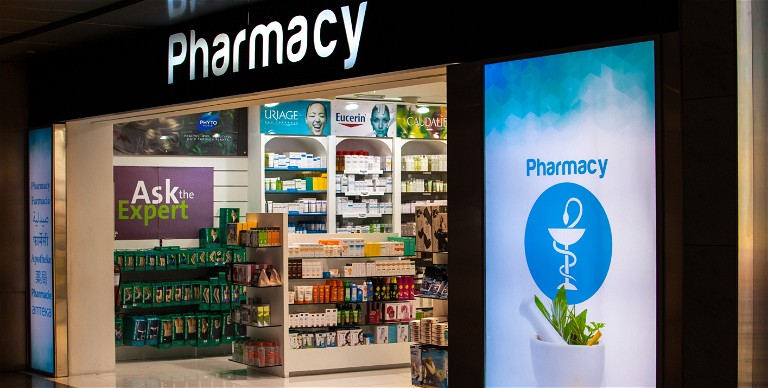Feature
Why are so many community pharmacies closing and what does this mean for local communities?
Betsy Goodfellow from Pharmafocus considers the importance of community pharmacies as part of primary care in the UK and the significance of their closure

Community pharmacies are an important part of primary care in the UK, using their wealth of clinical knowledge to help patients with acute or chronic conditions as an integrated part of a primary healthcare team.1 These pharmacies provide a range of health services, from advice and consultations to prescription-only medications and flu vaccines.1 However, in the last few years, an ever-increasing number of community pharmacies have closed, leaving a widening gap in local community access to primary healthcare.
Over the last seven years, pharmacies have seen a 30% cut in government funding (even when accounting for inf lation) and an estimated shortfall of £1.1bn in funding, meaning there are now just over 11,000 community pharmacies in England, the lowest number since 2015.2 This fall is due to rising operational costs and staff shortages, along with the reduced government support.2 In addition to the reduced funding, there has been an expansion of the role that community pharmacies are expected to play, in order to reduce the strain on general practitioners (GPs) and the wider NHS, with the government introducing a plan to allow pharmacists to prescribe antibiotics and routine tests.3 This includes treating simple conditions such as earache, sore throat, sinusitis, impetigo, shingles, infected insect bites and uncomplicated urinary tract infections in women.
In addition to the existing pharmacy closures, 252 in-store supermarket pharmacies are at risk of closure this year, with Lloyds Pharmacy announcing in January that it will close its branches in 237 Sainsbury’s stores.4 In the same month, Asda announced that it will close seven of its 241 in-store pharmacies, and Tesco has also announced that it will close eight of its 351 in-store pharmacies.4 Even though Asda and Tesco are currently only closing a fraction of their in-store pharmacies, these closures will still impact local communities. While these closures will greatly reduce the number of easily accessible and convenient pharmacies, they will also likely impact those who are already vulnerable, as they may struggle to access a pharmacy elsewhere, leading to difficulty in receiving their prescriptions and accessing the other health services that community pharmacies provide.
It has also been calculated that 40% of permanent pharmacy closures have occurred in 20% of the most deprived areas, with 63% happening in the Northwest, West Midlands, Yorkshire and the Humber.5 This has only served to increase the existing barriers to accessing good healthcare due financial insecurity in these areas. In 2014, 99% of people in the most deprived areas lived within a 20-minute walk of a community pharmacy, compared to 90% in the least deprived areas, although it is likely that this number will have fallen for both groups during the last nine years.5
But what impact will these closures have on the health of local communities?
The combination of closing a large proportion of pharmacies and giving greater prescribing powers and responsibilities to the remaining pharmacies can only lead to a lower level of care for the majority of patients, as they become overstretched. Although this reduces strain on GP services, the knock-on effect of these increased responsibilities, along with the closures, will lead to pharmacies struggling to cope with an increased demand from the overspill of patients previously treated at now closed branches and from patients expecting additional services such as consultations and prescriptions for simple infections or conditions.
Experts have also expressed their concern that many more pharmacies could close over the coming years due to this increased pressure and workload, which can only make the issue worse.2
Sanjeev Panesar, who owns Pan Pharmacy in Birmingham, UK, commented: "Things are in serious jeopardy. It's our worst year ever, where we've made a loss. We have to make some really tough calls and decisions now."2 He also added that he would love to help relieve the burden on the NHS and GPs specifically, however this is not possible currently with ongoing financial constraints.2
In 2019, the Department of Health and Social Care (DHSC), NHS England and the Pharmaceutical Services Negotiating Committee (PSNC) agreed on a Community Pharmacy Contractual Framework running from 2019 to 2024, which lays out how pharmacies are expected to help with the NHS Long Term Plan.6 They pledged £2.592bn to be spent on community pharmacies between 2019 and 2024, in the hopes of providing stability and reassurance to community pharmacies, thus allowing them to continue to provide primary healthcare efficiently, especially with their newly extended responsibilities.6
On the whole, it is evident that, as more pharmacies close, the strain on those remaining only increases. This, combined with the additional roles and responsibilities given to pharmacies in order to reduce the strain on GP surgeries and the wider NHS, has greatly increased pressure on pharmacies. Along with the lack of government funding, this has inevitably led to mass closures with 670 pharmacies closing since 2015, which has impacted the ability of local communities to easily access pharmacies, resulting in a potentially negative effect on the population’s health.7
References: